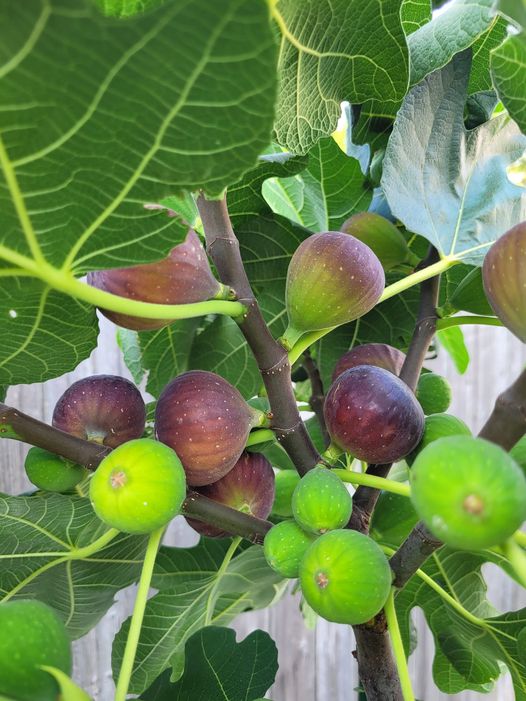
TAKE CARE OF FIG IN POT AND IN GROUND
The fig tree is a tropical tree, naturally occurring in the warm Mediterranean region, Middle East and parts of Asia. Fig trees thrive in the warm and steady climate of the Mediterranean and surrounding regions. But fig trees have been naturalized to North American climate and only require a hot summer to produce a bounty of fruit.
Fig trees are deciduous (leaves fall off in winter and grow back in spring) and can grow 5 - 30 feet depending upon the variety. They produce beautiful deeply lobed and single, spade-shaped leaves. Leaves are thick and lush; Shapes and textures are variety dependent and sometimes many different types of leaves will grow on one tree.
POTTED FIG TREES

Keeping and caring for your new fig tree in a pot is not difficult. You may have to adjust the rules according to the size of your tree, climate and soil type, but if you follow these general guidelines you should be okay.
Place your pot in full sun. Your fig tree will require at least 6-8 hours of full sun per day. More sun = more watering, healthier yields, and tastier figs.
Use a well-draining pot that’s large enough for the tree but easy enough for you to maneuver. The pot should have enough holes on the bottom to ensure that water will run through and not collect. Holes on the sides of the pot are a good idea too as this will promote a proper transfer of air to the root zone and more places for water to escape.
Do not ever put a saucer or pan under your pot.
Place a layer of pine bark chips on the bottom of your pot to aid with drainage.
Use a good quality Potting Mix when transplanting and/or root pruning. Good quality Potting Mix is available by the bag, year-round in any of the retail big box stores or local nurseries.
Water your potted fig tree every other day during May/June and up to every day July through September. Water up to two times per day when it’s extremely hot (90’s or better). Water much less as the fig season is winding down.
Don’t place your potted fig tree in the path of lawn sprinklers and do not spray water or other products directly on fig leaves. If you must spray a product to treat your fig tree, do it in the early morning or evening and never in direct sunlight.
Transplant and/or root prune every 2-3 years. Generally, if it is difficult for you to poke your finger through the soil at the top of your pot, it’s time to transplant and/or root prune. You can use the same pot or move up a size or two. The size of the pot is all up to you and what you are physically able to handle.
When storing your potted fig trees for the winter in a shed or garage be sure to cover any windows with black plastic or other material that will not allow any light through.
IN-GROUND FIG TREES

If you choose to plant your fig tree in-ground, these guidelines will help you.
- Plant your tree in-ground in full sun. Your fig tree will require at least 6-8 hours of full sun per day. More sun = more watering, healthier yields, and tastier figs.
- Dig the hole double the size of the root ball.
- Pour a mixture of garden and potting soil in the bottom of the hole. Place the fig tree on top of the fresh soil so the top of the root ball is slightly above the ground. Add more mix to the sides and top. Pack down lightly.
- Give the newly planted fig tree a good drink but don’t overwater.
- Do not spray water or other products directly on fig leaves. If you must spray a product to treat your fig tree, do it early in the morning or evening and never in direct sunlight.
- Prune your in-ground fig tree annually. Keep it at a reasonable height that will make it easy for you to harvest fruit.
- Protect your fig tree from the winter by covering or planting in a micro-climate. When covering, do not use a plastic sheet as the first layer touching the branches. Plastic collects moisture that freezes, sticks to the branches and kills them. Best to use burlap.
Water in-ground trees lightly every 2 or 3 days after planting. Once the roots take hold and the buds on your tree start to swell or you notice new growth, you can water every day or every other day. Don’t drown your tree; a little moisture for an in-ground tree goes a long way. Roots of in-ground fig trees are greedy and once they take hold they’ll find the water. If the ground looks and/or feels moist there is probably enough water available and you can water more sparingly or not at all. If the ground around your in-ground tree dries out quickly, use mulch around the base to help keep it moist. Stay actively involved in watering and a system will naturally develop that suits you and your fig tree.
